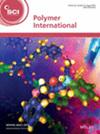求助PDF
{"title":"Design of an amino-functionalized molecularly imprinted polymer via thiol–maleimide click chemistry for chiral separation of ketoprofen","authors":"May Abdullah Abomuti","doi":"10.1002/pi.6762","DOIUrl":null,"url":null,"abstract":"<p>A molecularly imprinted polymer was developed to selectively adsorb <i>S</i>-ketoprofen (S-KP) and chirally separate it from a racemic mixture. Synthesis involves condensation polymerization of 4-mercaptophenol and 4-nitrophenol with formaldehyde to obtain a thiolated/nitro-functionalized polymer that was further reduced to an amino-functionalized polymer (HS-P-NH<sub>2</sub>) using sodium dithionite. Finally, the <i>S</i>-imprinted polymer (S-KP-P) was prepared by imprinting S-KP onto HS-P-NH<sub>2</sub>, followed by post-crosslinking with bis(maleimido)ethane through thiol–maleimide click reaction. Confirmation of the successful functionalization and crosslinking was done via structural characterization techniques. Kinetic studies showed that the crosslinking reaction followed second-order kinetics, with thermodynamic analysis indicating a spontaneous, exothermic process. In the adsorption experiments, S-KP-P manifested better enantioselectivity in the maximum capacity of adsorptions of 422 mg g<sup>−1</sup> for S-KP <i>versus</i> 243 mg g<sup>−1</sup> for R-KP. The Langmuir model provided the best fit to the isotherm data, confirming monolayer adsorption on homogeneous binding sites. Chiral separation experiments using column chromatography demonstrated the ability of S-KP-P to resolve (±)-KP, yielding 97% enantiomeric excess (ee) for R-KP in the first elution and 94% ee for S-KP in the second. In contrast, the non-imprinted polymer showed no enantioselectivity. The results confirm the potential of S-KP-P for efficient enantioselective separation in pharmaceutical applications. © 2025 Society of Chemical Industry.</p>","PeriodicalId":20404,"journal":{"name":"Polymer International","volume":"74 8","pages":"696-709"},"PeriodicalIF":3.6000,"publicationDate":"2025-04-11","publicationTypes":"Journal Article","fieldsOfStudy":null,"isOpenAccess":false,"openAccessPdf":"","citationCount":"0","resultStr":null,"platform":"Semanticscholar","paperid":null,"PeriodicalName":"Polymer International","FirstCategoryId":"92","ListUrlMain":"https://scijournals.onlinelibrary.wiley.com/doi/10.1002/pi.6762","RegionNum":4,"RegionCategory":"化学","ArticlePicture":[],"TitleCN":null,"AbstractTextCN":null,"PMCID":null,"EPubDate":"","PubModel":"","JCR":"Q2","JCRName":"POLYMER SCIENCE","Score":null,"Total":0}
引用次数: 0
引用
批量引用
Abstract
A molecularly imprinted polymer was developed to selectively adsorb S -ketoprofen (S-KP) and chirally separate it from a racemic mixture. Synthesis involves condensation polymerization of 4-mercaptophenol and 4-nitrophenol with formaldehyde to obtain a thiolated/nitro-functionalized polymer that was further reduced to an amino-functionalized polymer (HS-P-NH2 ) using sodium dithionite. Finally, the S -imprinted polymer (S-KP-P) was prepared by imprinting S-KP onto HS-P-NH2 , followed by post-crosslinking with bis(maleimido)ethane through thiol–maleimide click reaction. Confirmation of the successful functionalization and crosslinking was done via structural characterization techniques. Kinetic studies showed that the crosslinking reaction followed second-order kinetics, with thermodynamic analysis indicating a spontaneous, exothermic process. In the adsorption experiments, S-KP-P manifested better enantioselectivity in the maximum capacity of adsorptions of 422 mg g−1 for S-KP versus 243 mg g−1 for R-KP. The Langmuir model provided the best fit to the isotherm data, confirming monolayer adsorption on homogeneous binding sites. Chiral separation experiments using column chromatography demonstrated the ability of S-KP-P to resolve (±)-KP, yielding 97% enantiomeric excess (ee) for R-KP in the first elution and 94% ee for S-KP in the second. In contrast, the non-imprinted polymer showed no enantioselectivity. The results confirm the potential of S-KP-P for efficient enantioselective separation in pharmaceutical applications. © 2025 Society of Chemical Industry.
巯基马来酰亚胺点击化学设计用于酮洛芬手性分离的氨基功能化分子印迹聚合物
研制了一种分子印迹聚合物,用于选择性吸附s -酮洛芬(S-KP)并将其从外消旋混合物中手性分离。合成过程包括4-巯基苯酚和4-硝基苯酚与甲醛缩聚,得到巯基/硝基功能化聚合物,再用二亚硝酸钠还原为氨基功能化聚合物(HS-P-NH2)。最后,将S-KP印迹到HS-P-NH2上,通过巯基-马来酰亚胺的咔嗒反应与双(马来酰亚胺)乙烷交联,制备S-KP- p印迹聚合物。通过结构表征技术确认了成功的功能化和交联。动力学研究表明,交联反应遵循二级动力学,热力学分析表明这是一个自发的放热过程。在吸附实验中,S-KP- p表现出更好的对映选择性,S-KP的最大吸附量为422 mg g−1,而R-KP的最大吸附量为243 mg g−1。Langmuir模型最符合等温线数据,证实了在均匀结合位点上的单层吸附。采用柱层析的手性分离实验证明了S-KP- p对(±)-KP的分离能力,第一次洗脱时R-KP的对映体过量(ee)为97%,第二次洗脱时S-KP的对映体过量(ee)为94%。相比之下,非印迹聚合物没有对映体选择性。结果证实了S-KP-P在药物对映体分离中的应用潜力。©2025化学工业协会。
本文章由计算机程序翻译,如有差异,请以英文原文为准。




 求助内容:
求助内容: 应助结果提醒方式:
应助结果提醒方式:


